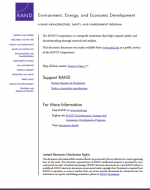As housing prices rise, developers and land owners are able to make greater profit for building commercial and residential developments.
Inclusionary policies seek to “capture” a portion of the higher value by requiring that developers include affordable housing in developments that otherwise would not include it. In its simplest form, an inclusionary housing program might require developers to sell or rent 10 to 30 percent of new residential units to lower-income residents.
Local inclusionary housing programs can vary. Some of this variation is related to state policy: the legal authority for municipalities to implement an inclusionary housing policy depends on whether or not state law allows it.* However, even within the same state, local jurisdictions adopt different programs in response to local conditions.
Several examples illustrate what these local programs have in common and also how they differ to meet local circumstances. See Designing a Program for more detailed information about the specific mechanics of these programs.




